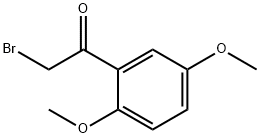2,5-Dimethoxytoluene
- CAS NO.:24599-58-4
- Empirical Formula: C9H12O2
- Molecular Weight: 152.19
- MDL number: MFCD00041901
- EINECS: 246-343-1
- SAFETY DATA SHEET (SDS)
- Update Date: 2024-12-18 14:08:57

What is 2,5-Dimethoxytoluene?
Chemical properties
CLEAR LIGHT YELLOW LIQUID
The Uses of 2,5-Dimethoxytoluene
2,5-Dimethoxytoluene may be used as a reagent in the synthesis of 2,5-dimethoxy-4-methylbenzaldehyde-7-14C. Its IR spectrum has been used to establish the methyl group migration in the acid catalyzed rearrangement of 4-methoxy-4-methylcyclohexadienone.
General Description
2,5-Dimethoxytoluene (1,4-dimethoxy-2-methyl benzene) is a methoxy methyl benzene derivative. It has been synthesized from 2-methylhydroquinone. It is one of the volatile constituents identified from beechwood creosote and Tuber brumale species. It is reported to be one of the thermochemolysis products in Delaware bay particles and dissolved organic matters.
Properties of 2,5-Dimethoxytoluene
| Melting point: | 19-21 °C |
| Boiling point: | 218-220 °C/751 mmHg (lit.) |
| Density | 1.049 g/mL at 25 °C (lit.) |
| refractive index | n |
| Flash point: | 215 °F |
| storage temp. | Sealed in dry,Room Temperature |
| form | clear liquid |
| color | Colorless to Light yellow to Light orange |
| Water Solubility | PRACTICALLY INSOLUBLE |
| CAS DataBase Reference | 24599-58-4(CAS DataBase Reference) |
| NIST Chemistry Reference | Benzene, 1,4-dimethoxy-2-methyl-(24599-58-4) |
| EPA Substance Registry System | 2,5-Dimethoxytoluene (24599-58-4) |
Safety information for 2,5-Dimethoxytoluene
| Signal word | Warning |
| Pictogram(s) |
 Exclamation Mark Irritant GHS07 |
| GHS Hazard Statements |
H315:Skin corrosion/irritation H319:Serious eye damage/eye irritation H335:Specific target organ toxicity, single exposure;Respiratory tract irritation |
| Precautionary Statement Codes |
P261:Avoid breathing dust/fume/gas/mist/vapours/spray. P264:Wash hands thoroughly after handling. P264:Wash skin thouroughly after handling. P271:Use only outdoors or in a well-ventilated area. P280:Wear protective gloves/protective clothing/eye protection/face protection. P302+P352:IF ON SKIN: wash with plenty of soap and water. P305+P351+P338:IF IN EYES: Rinse cautiously with water for several minutes. Remove contact lenses, if present and easy to do. Continuerinsing. |
Computed Descriptors for 2,5-Dimethoxytoluene
| InChIKey | IQISOVKPFBLQIQ-UHFFFAOYSA-N |
New Products
Tert-butyl bis(2-chloroethyl)carbamate (S)-3-Aminobutanenitrile hydrochloride N-Boc-D-alaninol N-BOC-D/L-ALANINOL N-octanoyl benzotriazole 3-Morpholino-1-(4-nitrophenyl)-5,6-dihydropyridin- 2(1H)-one Furan-2,5-Dicarboxylic Acid Tropic acid Fmoc-Val-Cit-PAB DIETHYL AMINOMALONATE HYDROCHLORIDE 1,1’-CARBONYLDIIMIDAZOLE R-2-BENZYLOXY PROPIONIC ACID 1,1’-CARBONYLDI (1,2-4 TRIAZOLE) N-METHYL INDAZOLE-3-CARBOXYLIC ACID (2-Hydroxyphenyl)acetonitrile 4-Bromopyrazole 5-BROMO-2CYANO PYRIDINE 5-broMo-2-chloro-N-cyclopentylpyriMidin-4-aMine 2-(Cyanocyclohexyl)acetic acid 4-methoxy-3,5-dinitropyridine 2-aminopropyl benzoate hydrochloride 1-(4-(aminomethyl)benzyl)urea hydrochloride tert-butyl 4- (ureidomethyl)benzylcarbamate diethyl 2-(2-((tertbutoxycarbonyl)amino) ethyl)malonateRelated products of tetrahydrofuran








You may like
-
 2,5-Dimethoxytoluene CAS 24599-58-4View Details
2,5-Dimethoxytoluene CAS 24599-58-4View Details
24599-58-4 -
 2,5-Dimethoxytoluene CAS 24599-58-4View Details
2,5-Dimethoxytoluene CAS 24599-58-4View Details
24599-58-4 -
 1975-50-4 98%View Details
1975-50-4 98%View Details
1975-50-4 -
 2-HYDROXY BENZYL ALCOHOL 98%View Details
2-HYDROXY BENZYL ALCOHOL 98%View Details
90-01-7 -
 2-Chloro-1,3-Bis(Dimethylamino)Trimethinium Hexafluorophosphate 221615-75-4 98%View Details
2-Chloro-1,3-Bis(Dimethylamino)Trimethinium Hexafluorophosphate 221615-75-4 98%View Details
221615-75-4 -
 14714-50-2 (2-Hydroxyphenyl)acetonitrile 98+View Details
14714-50-2 (2-Hydroxyphenyl)acetonitrile 98+View Details
14714-50-2 -
 118753-70-1 98+View Details
118753-70-1 98+View Details
118753-70-1 -
 733039-20-8 5-broMo-2-chloro-N-cyclopentylpyriMidin-4-aMine 98+View Details
733039-20-8 5-broMo-2-chloro-N-cyclopentylpyriMidin-4-aMine 98+View Details
733039-20-8
Statement: All products displayed on this website are only used for non medical purposes such as industrial applications or scientific research, and cannot be used for clinical diagnosis or treatment of humans or animals. They are not medicinal or edible.